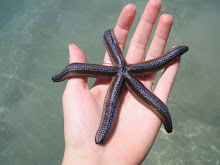Last night we got to visit National Geographic's Explorer and it was fantastic! Actually, these types of opportunities seem to be fairly common, with yachts and cruise ships stopping here in our harbor hoping for a tour of the station. Mutualism at its best. It's an I'll show you mine if you show me yours sort of a deal. Passengers get off, tour the station, and invite us over to their ship for a fancy happy hour in return. The ships vary in size and purpose, but are all swell. National Geographic, as far as I know, aims for scenic beauty but also adds science and discovery to their cruise agenda.
The Explorer is a beautiful, sleek ship that travels in style. They have an indoor observation library that looks out over the ocean and has a glass ceiling where you can watch the stars, that is, if it were dark. Alice and I toasted our adventure on the outside deck in front of the huge glacier that lines our harbor. This was the first time since arriving that I had seen the station and landscape from such a perspective and it was simultaneously humbling and invigorating. I stepped back even further (in my mind, that is) and tried to think of myself as one of the passengers peering in on our lives at Palmer and what impressions that would give.
But back to the purpose of our evening visit... Our station and lab managers gave presentations about the station and the science research that takes place. The passengers listened politely and watched the TVs located on each wall of the lounge. I have no doubt they were engaged, many being researchers themselves, but I have become more and more interested in the art of communication and in particular, communicating science. I find that there is little grey area when measuring the "success" of a speech. If its not absolutely clear, enthused, and at least somewhat creative, it will become a blurry, dull memory. In other words, it fails to make a lasting impression or spark interest. I am presently reading Don't Be Such a Scientist, where Randy Olsen implores researchers to speak more from their gut and to BE EXCITED. Our representatives did a fine job, but I was still struck by how important it is to communicate well not only for the sake of presenting facts to the public, but also to remind general audiences how much energy and work is required to generate the information, regardless of its importance. Whether we learn that sea ice is receeding or that Antarctic gnats have visual adaptations, researchers should find the emotion to show pride in their work - we may be in trouble if facilities maintainance and administrative personnel have more charisma than scientists!
The fun didn't stop after the presentations, however. When a tall, young man approached Alice and I to talk about nitrifying bacteria, I thought to myself, "uh-oh." We talked science for a while and satisfied his questions as his siblings joined us. As it turns out, his oldest brother graduated from Grinnell in 2002!! What a fantastically small world. They were such a lovely family involved in some great activities and it was so refreshing to have spent time with them. After a few hours, we said goodbye to the swank, donned our neon orange float-coats, and returned home full of excitement after a great geataway. The fun just keeps on coming...
Tuesday, January 5, 2010
Subscribe to:
Post Comments (Atom)






Amanda, Yes! In our media-saturated world we can do better than the senseless confusion of science and religion that too often dominates the debate--as if they are mutually exclusive.. The public face of science needs a breath of fresh air somewhere between Carl Sagan, David Suzuki, and Bill Nye! How many people have even heard of Maude Barlow, or 'Her Deepness', Sylvia Earle? Who better to communicate to the public with a new voice than a generation that has come of age along side the personal computer, Facebook, MySpace, and the iPhone. You go, girl! :-)
ReplyDelete